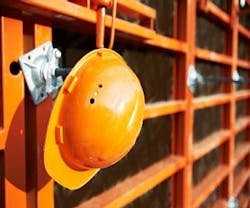Top 10 Equipment Trends for 2012
The Equipment Leasing and Finance Association has revealed its Top 10 Equipment Acquisition Trends for 2012. What can facility managers and building owners expect from the industry this year? Growth, uncertainty and end-user benefits come to the forefront as themes for 2012. Is your strategic acquisition plan for 2012 in place? These tips may help you formulate your plans:
1. New equipment acquisition will gradually, but steadily improve. The equipment finance industry is forecasting nine percent growth in investment in equipment and software for 2012, indicating that equipment acquisition by businesses in many industry sectors will increase this year.
2. Replacement needs will continue to drive new equipment acquisitions. Aging of equipment and replacement needs will be the main drivers of new equipment acquisition, as businesses await stronger signs of economic improvement before expanding their equipment investment.
3. Uncertainty over proposed changes to lease accounting will have businesses playing a waiting game. The resolution of proposed changes to lease accounting standards by the Financial Accounting Standards Board (FASB) and the International Accounting Standards Board (IASB) later this year will have businesses waiting to find out how their balance sheets, earnings and other financials will be affected. Meanwhile, industry advocacy will continue to mitigate the negative impacts of lease accounting changes on U.S. businesses and the economy. The good news is that the primary reasons to lease equipment will remain intact, from maintaining cash flow, to preserving capital, to obtaining flexible financial solutions, to avoiding obsolescence.
4. Used equipment prices will rebound in many, but not all, market segments. The collateral value of many categories of equipment that ‘bottomed out’ over the last few years will rebound in 2012. Car and truck values will be particularly strong, and construction equipment also will hold its value. Certain segments, such as corporate aircraft, will remain at relatively lower values.
5. Equipment finance companies will enhance customer relationship and support capabilities to build competitive advantages. End users of equipment will benefit greatly from the efforts of banks and captive and independent finance companies to grow. They’ll be providing specialized areas of expertise and value-added customer services that will be a win-win for both lessors and lessees.
6. Credit availability will enable equipment acquisition for eligible businesses. Last year credit approvals for the equipment finance industry remained above 75 percent. In 2012, businesses seeking financing for equipment acquisitions will often find credit approvals higher in the equipment finance industry than from bank loans.
7. Organizations seeking ways to cut costs and increase operational efficiencies will look to technology innovations. The flexibility, scalability and relative costs associated with cloud computing and shared services will begin to compete with new IT equipment purchases for many businesses.
8. The continuation of a limited bonus depreciation will allow businesses to plan for equipment upgrades or expansions. The continuation of the depreciation bonus will allow businesses to write off 50 percent of the cost on new equipment purchases in 2012. It remains to be seen whether the 100 percent bonus depreciation rate that expired at the end of 2011 will be restored.
9. Global financial pressures will continue to add uncertainty to U.S. investment in equipment. The fallout from the euro-zone crisis and other international financial instability will be a wild card in how much U.S. capital investment picks up this year.
10. Individual equipment markets will see steady growth slightly below 2011 rates. Investment in agriculture, computer and software, industrial, medical and transportation equipment will be positive, but may not match 2011 growth rates. Construction equipment investment is likely to slow in the immediate near term, but could be buoyed by the energy and housing sectors later in 2012.
